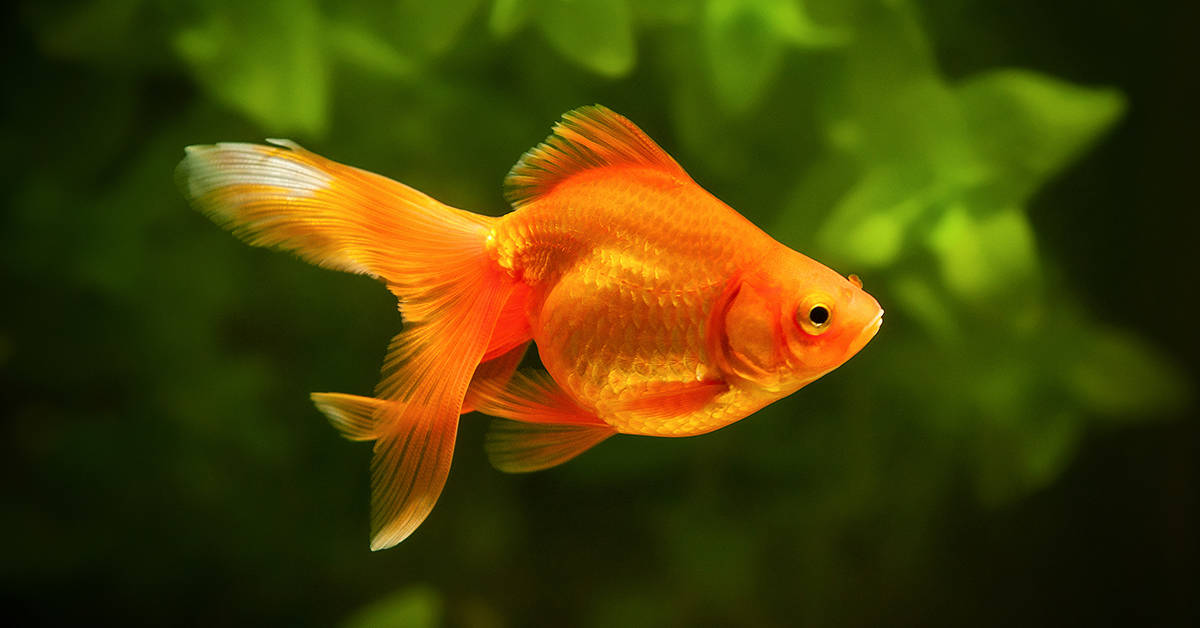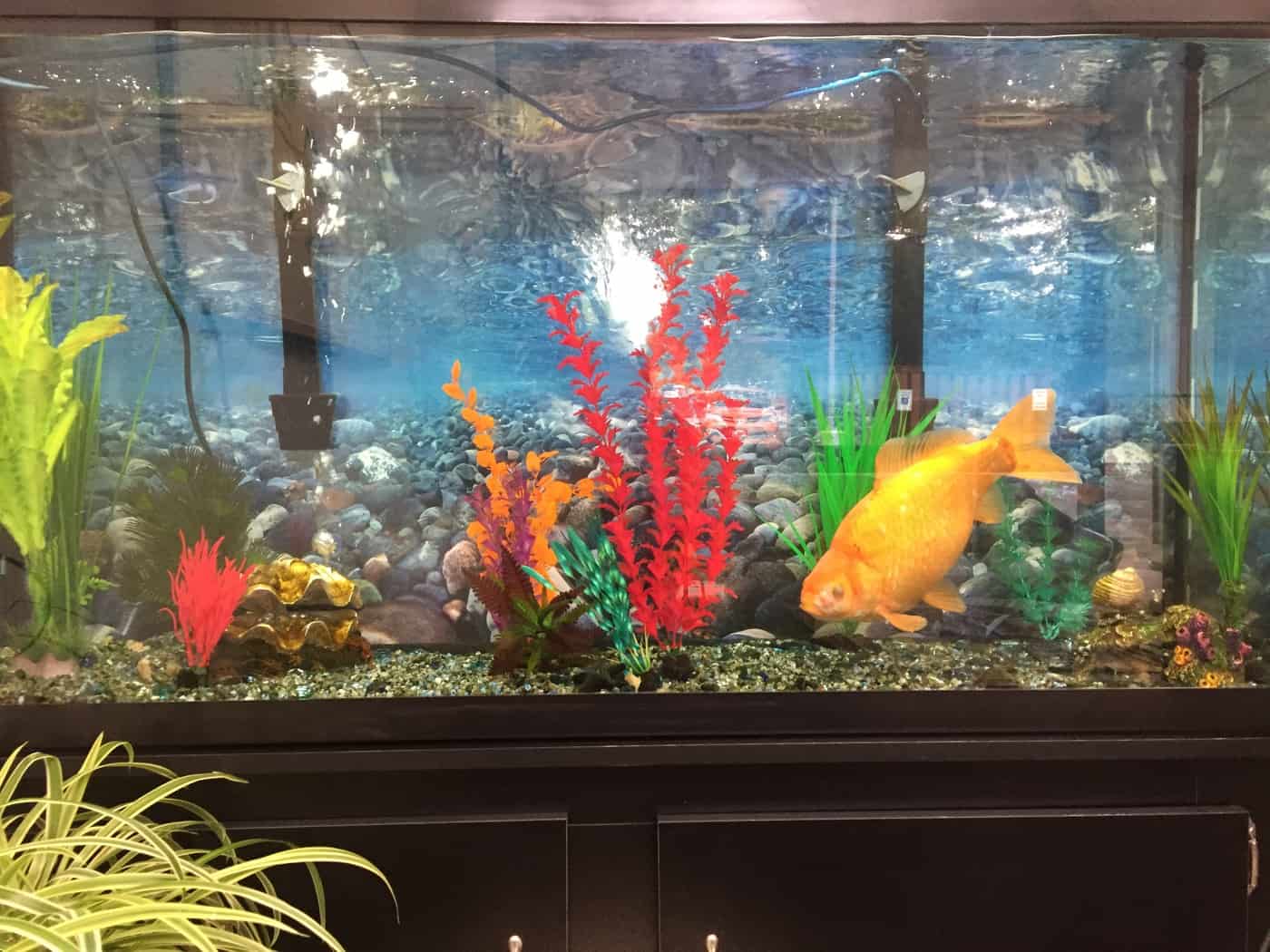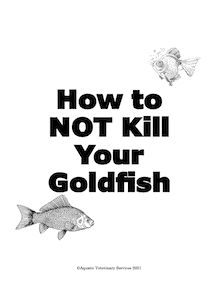
Goldfish are the most common pet fish we see at aquatic veterinary services. Be they comets or fancy, they have their own sets of unique issues.
Does your goldfish live in a bowl?
If your goldfish currently resides in a fish bowl, an upgrade to a tank with a filter is the best thing you can do prior to having the vet out to visit. Read more on why fish bowls are ancient technology and need to be phased out. Your goldfish tank does not require a heater, but definitely requires a filter.
How big is your fish tank?
Goldfish can grow very big! That 10-gallon tank you got when you first brought them home may not be big enough. We have seen a single goldfish require 100-gallons all to themselves! If your goldfish does not swim much or cannot turn comfortably, it’s time to upgrade to a larger tank. We recommend at LEAST 20-gallons per goldfish.

What are your water quality parameters?
Through no fault of their own, goldfish are not the most efficient food to mass converters and produce a lot of poop. Excess feeding and/or lazy maintenance can cause your nitrogen cycle to back up quickly, and may even result in Old Tank Syndrome. Although your fish might not be acting sick, this needs to be corrected.
If your goldfish is not doing well, check the ammonia, nitrite, nitrate, pH, kH and temperature parameters with a liquid-based test kit purchased within the last year. Your readings should be as follows:
| Parameter | Range |
| Ammonia | ≤ 0.1 mg/L |
| Nitrite | 0 mg/L |
| Nitrate | < 20 mg/L |
| pH | 6.5-8.5 |
| kH (alkalinity) | > 100 mg/L |
| gH (total hardness) | > 100 mg/L |
| Temperature | 60-80F (15-27C) |
If your tank is not within these parameters and does NOT fit the old tank syndrome parameters, do a water change, but no more than 50% of the total water. NEVER DO A 100% WATER CHANGE. Be sure to use a gravel vacuum to get into the nooks and crannies. For a demonstration, watch our tank cleaning video.
Does your goldfish look like a water balloon?
Goldfish are prone to a disease called polycystic kidney disease. Due to an unknown cause, cysts form in the kidney, causing water to become trapped in a fish’s body. Affected fish will swell up like a balloon, causing a “dropsy” appearance. (Remember, dropsy is not an actual disease.) Since the cause is unknown and damage to the kidneys very severe, there is no effective treatment other than making the fish comfortable.
Is your food as old as your fish?
After about 6 months, your fish’s food will have lost a lot of its Vitamin C content. Without Vitamin C in their diet, your fish is at increased risk for secondary disease. Feed your goldfish an appropriate diet, pellets are better than flakes, and replace it every 6 months.
Request Appointment For Your Goldfish
Our Most Popular Goldfish Articles
- Your Goldfish is NOT Constipated
- Why Does My Goldfish Float After Eating?
- Fancy Goldfish Buoyancy Help
- “My fish only cost a few dollars, why does he deserve veterinary care?”
- What Do I Feed My Goldfish?
- Fake Fish Diagnoses
- Why Are You Fasting Your Sick Fish?
- How Long Do Goldfish Live?
- Can I Train My Fish?
Download How to NOT Kill Your Goldfish
Goldfish are the most popular pet fish species and inexperienced owners often come up against the same challenges. Learn how to avoid the pitfalls of goldfish ownership and give them decades of the sweet life. We'll cover common issues, how to feed and answer the most common questions we are asked all about goldfish.


Subscribe and Download
How to NOT Kill Your Goldfish
"*" indicates required fields
